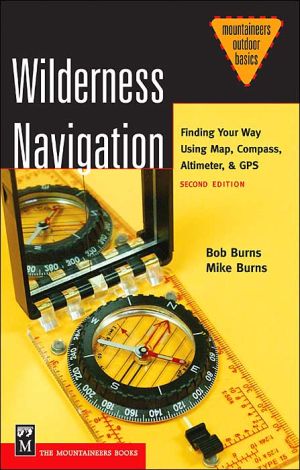Wilderness Navigation: Finding Your Way Using Map, Compass, Altimeter, &
A classic handbook for learning to navigate-extensively updated to include the newest trends and devices* GPS chapter completely updated to reflect newer models and features of GPS receivers now available * Expanded to include a section on routefinding on glaciers, along with additional information on changing declination * Extensive illustrated examples of orientation and navigation Proceed with confidence when heading off-road or off-trail with the second edition of Wilderness Navigation....
Search in google:
A classic handbook for learning to navigate-extensively updated to include the newest trends and devices* GPS chapter completely updated to reflect newer models and features of GPS receivers now available * Expanded to include a section on routefinding on glaciers, along with additional information on changing declination * Extensive illustrated examples of orientation and navigation Proceed with confidence when heading off-road or off-trail with the second edition of Wilderness Navigation. Whether you are climbing a glacier, orienteering in the backcountry, or on an easy day hike, Mike and Bob Burns cover all the latest technology and time-tested methods to help you learn to navigate-from how to read a map to compasses and geomagnetism. Bob Burns is a long-time member of The Mountaineers. He has taught classes in the use of map and compass since the late 1970s. Mike Burns is an avid climber. He has instructed climbing and navigation classes, and written articles for Climbing magazine.
Preface and Acknowledgments8Introduction101.Map Basics13USGS Topographic Maps14How to Read Topographic Maps15Limitations of Maps23Customizing and Modifying Maps24Carrying Maps on a Wilderness Trip24Where to Get Maps25The Importance of the Map262.Compass Basics27Types of Base Plate Compasses29Bearings30Bearings in the Field31Magnetic Declination34Back Bearings38Bearings on the Map39Practicing with the Compass41Tips on Compass Use42The Map and Compass: A Checklist43And for the Last Time453.Orientation with Map and Compass46Point Position47Line Position47Area Position48Orienting a Map50Direction and Bearing of the Slope51A Reminder534.Navigation with Map and Compass54Map and Compass54Compass Alone56Using Intermediate Objectives56The Intentional Offset ("Aiming Off")57The Parallel Path58Navigating around an Obstruction59Always Know Where You Are Headed, and Consider the Return Route60A Reminder615.Lost!62How to Avoid Getting Lost62What If You Do Get Lost?686.More About Maps71Distance Measurement on the Map71Slope Measurement on the Map74Range, Township, and Section777.More About Compasses and Geomagnetism81Where to Get Declination Information81Changes in Declination82Dip86Using the Clinometer87Other Types of Compasses888.The Altimeter92What the Altimeter Is and How It Works92Types of Altimeters92Effects of Weather on Altimeters93Precision and Accuracy94Effects of Temperature on Altimeters94Cautions When Using the Altimeter in Wilderness Travel94Orientation94Navigation95Decision Making95Use of Bearing of the Slope with the Altimeter969.The Global Positioning System97Selecting a GPS Receiver97Getting Started with GPS98Using a GPS Receiver in Wilderness Navigation99Orientation Using GPS and UTM Coordinates101Navigation Using GPS and UTM Coordinates104Datums, Zones, and Bands105Limitations of GPS Receivers10610.Wilderness Routefinding109On the Trail110In the Forest111In Alpine Areas113On Snow114Wands116On Glaciers118Moats and Bergschrunds120The Bootprint121The Art of Wilderness Routefinding122Bibliography124AppendixWilderness Navigation Practice Problems127Index138








